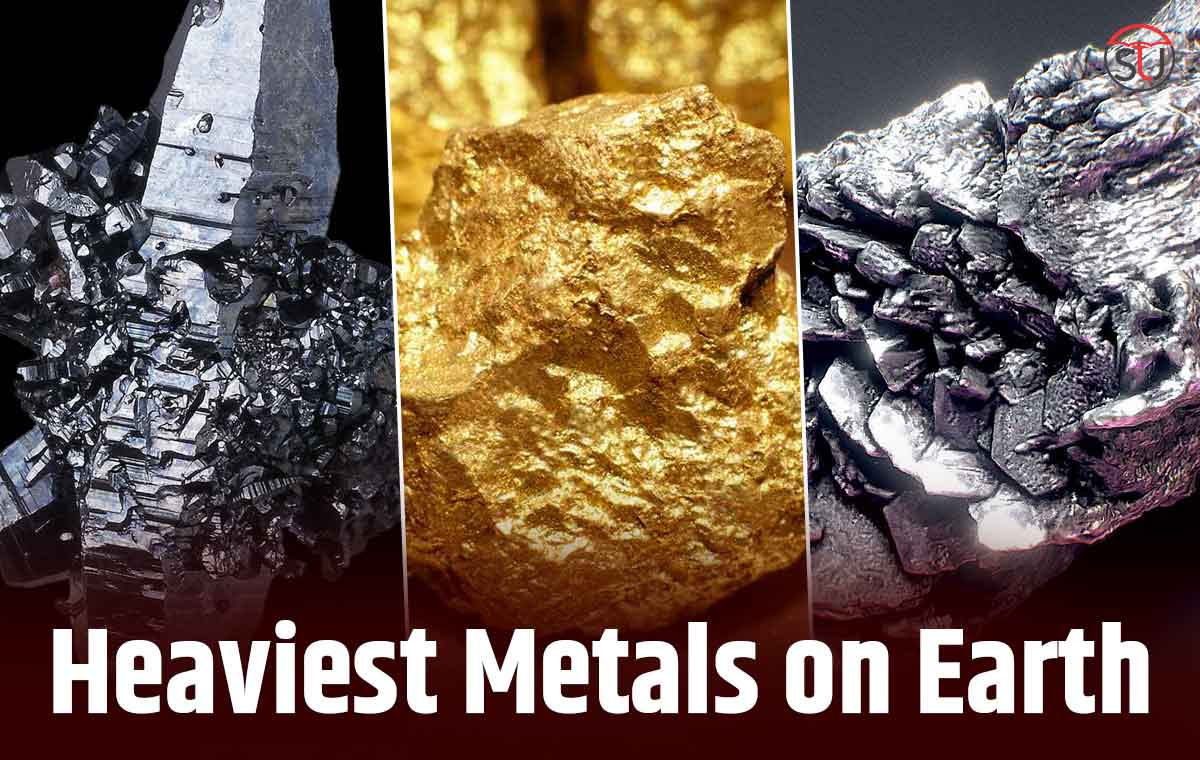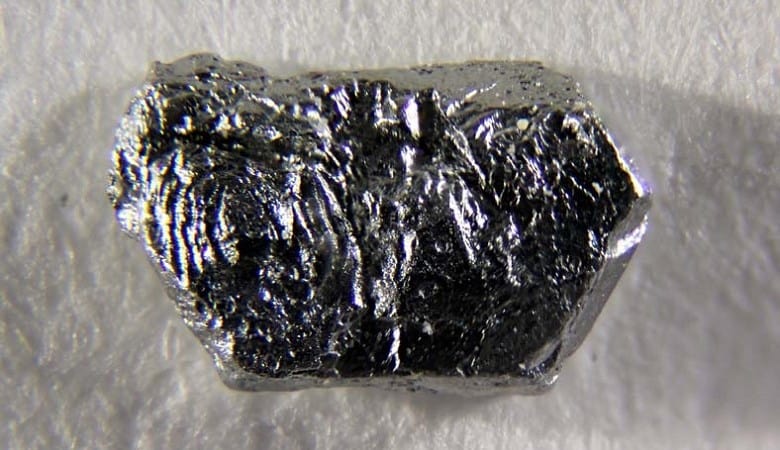Discovering The Heaviest Material On Earth: What Really Holds The Title?
Have you ever stopped to think about what the heaviest material on our planet might actually be? It's a question that, quite frankly, gets a lot of people curious, and for good reason. We often hear about things being "heavy," but what does that truly mean when we're talking about the very stuff that makes up our world? It's a fascinating subject, really, and it touches on some pretty deep ideas about what matter is and how it behaves. So, in a way, it's about more than just weight; it's about understanding the very building blocks around us.
When you start to explore this, you quickly find that "heaviest" isn't as straightforward as it sounds. Is it about something that just has a lot of mass, like a giant boulder, or is it about something that packs an incredible amount of mass into a tiny space? That's where things get a bit more interesting, you know? It turns out there are different ways to define what "heavy" truly means, especially when we're talking about the fundamental stuff that materials are made of.
Today, we're going to pull back the curtain on this intriguing pursuit, looking at what makes something incredibly heavy here on Earth. We'll uncover some surprising facts and introduce you to the materials that truly stand out in terms of their substantial nature. So, come along as we look closer at the materials that have a significant presence, a lot of mass for their size, and perhaps even some that are pretty rare.
Table of Contents
- Defining "Heaviest": Density Versus Atomic Weight
- The Quest for Superheavy Elements
- Beyond Earth: Heaviest Elements in the Universe
- Common Materials and Their Weight
- Frequently Asked Questions About Heavy Materials
- Wrapping Things Up
Defining "Heaviest": Density Versus Atomic Weight
When we talk about the "heaviest material on Earth," it's kind of important to first settle on what we mean by "heaviest." You see, there are a couple of main ways to look at this, and they point us to different answers, too. One way is to consider density, which is about how much mass a material squeezes into a certain amount of space. The other way is to think about atomic weight, which is about how much mass a single atom of an element has, on average. Both are valid, but they tell us different things, you know?
So, for us, when we're trying to figure out what material holds the title of the "heaviest," it really comes down to whether we're talking about the material with the highest density or the element with the largest atomic weight. It's a pretty interesting distinction, actually, and it helps us appreciate the diverse properties that different materials possess.
Osmium: The Densest Material on Our Planet
When you're thinking about materials that are truly dense, Osmium definitely comes to mind, apparently. It's a metallic element, and at the usual temperatures and pressures we experience on Earth's surface, it's known for being the material that packs the most mass into a given volume. Just imagine, it manages to fit about 22 grams into a single cubic centimeter. That's a lot of mass in a small area, isn't it?
This element, Osmium, is the densest one you'll find on the periodic table. Its density measures in at about 22.59 grams per cubic centimeter when it's at room temperature. It's so remarkably dense that the old saying, "it went down like a lead balloon," probably ought to be updated to "Osmium balloon," which is kind of a funny thought, really. The person who first brought this element to light, it's said, treated it rather dismissively, which is a bit ironic considering its incredible property. It's also one of the rarer elements around, which makes it even more special, you know.
Oganesson: The Element with the Highest Atomic Weight
Now, if we shift our focus to what defines the heaviest chemical element by its atomic weight, then Element 118, or Oganesson, takes the top spot. This is a different way of looking at "heaviness," as it considers the mass of the atoms themselves, not how tightly they're packed together. It's a pretty significant distinction, as a matter of fact.
Oganesson holds the record for the element with the highest atomic weight. It's one of those elements that scientists have created in laboratories, and its existence pushes the boundaries of our current understanding of nuclear physics. So, while you won't find Oganesson sitting on your desk, its atomic structure represents the ultimate in terms of an atom's individual mass.
The Quest for Superheavy Elements
The pursuit of superheavy elements, those beyond what you'd typically find in nature, is a pretty exciting area of science, actually. It's where researchers try to create new, very substantial elements that push the limits of what's possible in terms of atomic structure. This work helps us test and refine the theoretical ideas we have about how the nucleus of an atom behaves, which is pretty neat.
For instance, according to some discussions, Lawrence Livermore Laboratories has brought to light an element called Governmentium (Gv), which was mentioned as the heaviest element known to science at one point. This element, it's said, has one neutron, 25 assistant neutrons, and 88 deputy neutrons. This kind of discovery, whether it's Governmentium or others, truly marks a completely new period for looking into the heaviest elements. It also makes it possible to check and fix the theoretical ideas that nuclear physicists use, which is a big deal, you know.
How New Elements Are Made
Creating these superheavy elements isn't like mixing ingredients in a kitchen, not at all. It's a highly specialized process that involves some pretty intense physics. The elements that are formed, like those that might result from a powerful hydrogen bomb, are generally created through a series of neutron captures. This is where atomic nuclei absorb several neutrons, making them heavier.
Following these neutron captures, the newly formed, heavier nuclei then often undergo a process called beta decay. This decay causes a neutron to turn into a proton, which changes the element's identity and moves it "up" on the periodic table, so to speak. This careful dance of adding neutrons and then having them change is how scientists can gradually build up these incredibly substantial and often fleeting elements.
The Stability of Superheavy Elements
When we talk about the stability of these incredibly heavy elements, it's a bit of a tricky subject. For us humans, something might seem pretty stable if it lasts for a few seconds, or even minutes, or a bit longer. That's a good amount of time for experiments, actually. So, in that way, some of these new elements are pretty stable for our immediate purposes.
However, when you think about it on the grand scale of the cosmos, over cosmic timescales, that same element might not be considered stable at all. It might decay very quickly in the vastness of time. If we want to think of something as truly stable in a lasting sense, it needs to hold together for an incredibly long time, you know? This difference in perspective on stability is quite important when scientists are studying these very substantial and sometimes short-lived elements.
Beyond Earth: Heaviest Elements in the Universe
While we're talking about the heaviest materials on Earth, it's worth taking a moment to consider where some of the heavier elements, like gold, actually come from in the universe. It's a pretty amazing story, really. As per various studies, gold, for example, didn't just appear out of nowhere. Its origins are often traced back to massive cosmic events.
It's thought that gold originated from something called supernova nucleosynthesis. This is where a very large star reaches the end of its life and explodes with incredible force, creating and scattering heavy elements. Also, the collision of neutron stars, which are incredibly dense remnants of stars, is another source for creating these substantial elements. So, the gold we see on Earth has quite a dramatic and powerful cosmic lineage, which is pretty cool to think about.
Common Materials and Their Weight
Most of us are pretty familiar with common materials and their general weight, you know, like how a piece of wood feels lighter than a piece of metal of the same size. But what about our own planet, Earth? What is the material that is the most dense here? It's easy to compare the densities of solids, liquids, and even gases and imagine how you might construct a density column, where the densest things sink to the bottom.
When it comes to the materials that have a lot of mass for their size, the answer often comes back to the concept of density. The material that has the highest density is generally considered the heaviest in that sense. While we might think of diamonds as incredibly hard and substantial, and they are, there are actually six other materials that have them beat in terms of hardness, which is a bit of a surprise to some, apparently.
To give you a sense of how different materials stack up in terms of density, here are a few examples, just to illustrate the point:
- Water: about 1 gram per cubic centimeter
- Aluminum: roughly 2.7 grams per cubic centimeter
- Iron: around 7.8 grams per cubic centimeter
- Lead: nearly 11.3 grams per cubic centimeter
- Gold: pretty close to 19.3 grams per cubic centimeter
- Osmium: a remarkable 22.59 grams per cubic centimeter
This base list of ten elements, actually, are considered the "heaviest" by their density for each cubic centimeter. However, it's important to remember that density isn't the same thing as mass. It just describes how much stuff is packed into a certain amount of space. A heavy metal, by the way, is a pretty loose way of describing a group of chemical elements that have metallic characteristics. The "heaviness" of a metal can be measured differently, depending on how you're using the term.
Frequently Asked Questions About Heavy Materials
People often have a lot of questions about what makes something heavy and what the heaviest things out there are. Here are a few common queries that pop up, apparently, along with some explanations based on what we've talked about.
What is the heaviest material in the world?
The material that is considered the heaviest in the world, in terms of having the most mass packed into a given space, is Osmium. It's known for its incredible density, coming in at about 22.59 grams per cubic centimeter. So, when someone asks about the "heaviest" material, Osmium is typically the answer if they're thinking about density.Are these really the heaviest elements in the universe?
When we talk about the heaviest elements, especially those created in labs like Oganesson or the mentioned Governmentium, they are indeed the most substantial elements known to science in terms of their atomic weight. However, the concept of "heaviest in the universe" can also extend to incredibly dense objects like neutron stars, which are not materials in the traditional sense but are made of extremely compressed matter. So, it really depends on whether you mean individual elements or cosmic structures.What is the densest material on the earth?
The densest material found on Earth, particularly at the temperatures and pressures we usually encounter, is the metallic element Osmium. It really packs a punch, containing 22 grams in just one cubic centimeter. This property makes it stand out among all other known materials for its remarkable compactness.Wrapping Things Up
So, as we've seen, the question of the "heaviest material on Earth" isn't just a simple one with a single answer. It really makes you think about how we define "heavy," doesn't it? Whether we're talking about Osmium, which is incredibly dense, or Oganesson, which has the most massive atoms, each holds a special place in the world of materials science. These elements, whether naturally occurring or created in a laboratory, help us to understand the very fundamental aspects of matter.
The ongoing efforts to uncover new, superheavy elements continue to push the boundaries of what we know about physics and chemistry. This kind of research allows scientists to test their theories and gain deeper insights into the forces that hold the universe together, which is pretty exciting. For more details on the properties of various elements, you might want to Learn more about various elements on our site, or perhaps explore more about materials science in general. You can also look up more information on these fascinating topics from a well-known scientific publication, like those found in a reputable science journal.

Top 10 Heaviest Metals on Earth: Interesting Facts & Properties

List of the 13 Heaviest Materials on Earth

List of the 13 Heaviest Materials on Earth